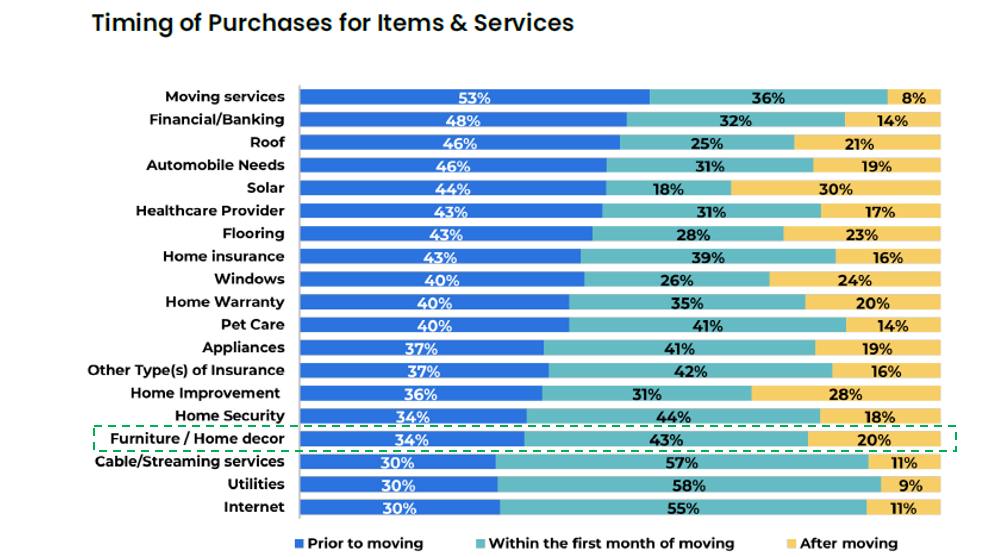You may remember the days of flipping through a furniture catalogue or browsing showrooms, but the way we shop for furniture has undergone a seismic shift.
Today’s furniture shopper is a digital nomad, effortlessly navigating the online world to find their perfect piece.
From Instagram-worthy inspiration to in-depth customer reviews, they’re armed with information. But let’s be real, sometimes you just have to feel the fabric and sink into that sofa, right?
The modern furniture journey is a fascinating blend of online convenience and the good old-fashioned desire to touch and try before you buy.
So, how can furniture retailers adapt to meet the evolving needs and expectations of modern furniture shoppers? Let’s explore these top six furniture marketing trends and tips.
1. Embracing the Digital Wave
The digital landscape has transformed the way consumers shop for furniture. According to research, 92% of shoppers begin their furniture search online. By having a strong digital presence, furniture marketers can tap into this online shift and position themselves where their potential customers are actively seeking inspiration and products. A well-designed website, an engaging social media presence, and strategic online advertising all contribute to attracting and capturing the attention of these consumers.
- Over 50% of furniture purchases in 2024 were influenced by online reviews, with 88% of consumers stating they trust online reviews as much as personal recommendations. (PowerReviews)
- 70% of furniture shoppers in 2024 conducted online research before making a purchase. (Statista)
- The furniture e-commerce market is projected to reach 430 billion U.S. dollars in revenues by 2029. (Statista)
2. The Rise of Augmented Reality (AR) and Virtual Showrooms
To bridge the gap between digital browsing and in-store visits, furniture marketers are focusing on creating seamless online-to-offline experiences, incorporating augmented reality (AR) and virtual showrooms.
By superimposing 3D models of furniture onto real-world environments, AR technology allows customers to see how a particular piece would look and fit in their homes before making a purchase.
For furniture retailers, AR and virtual showrooms enhance customer engagement, reduce the need for physical showroom space, and provide valuable data on customer preferences and behaviors.
- 80% of consumers preferred brands that offered AR experiences for furniture shopping. (Accenture)
- 40% of consumers reported that AR experiences made them more likely to spend more on furniture purchases. (Salesforce)
- Over 50% of furniture brands planned to invest in AR/VR technology for their marketing and sales efforts in 2024. (Retail Dive)
- Virtual showrooms experienced a 30% increase in customer engagement compared to traditional online shopping. (McKinsey)
3. Sustainable and Eco-Friendly Designs
The industry is also witnessing a shift towards sustainability, with consumers placing a greater emphasis on eco-friendly designs and brands that prioritize responsible manufacturing practices. As consumers become more environmentally conscious, they are actively seeking furniture options that align with their values of sustainability and responsible consumption.
- 65% of consumers were willing to pay a premium for sustainably sourced and manufactured furniture. (Nielsen)
- 40% of consumers actively researched the environmental impact of furniture brands before making a purchase. (Mintel)
4. Influencer Partnerships
Influencer partnerships can significantly impact consumer behavior. When influencers showcase furniture products and share positive experiences, their audience perceives it as a form of peer recommendation.
Consumers are more likely to trust the opinions of influencers they follow, considering them as reliable sources of information and inspiration. This peer influence drives consumers to explore the recommended furniture items and consider them for their own homes.
- Over 60% of consumers in the 18-34 age group reported making a purchase decision based on an influencer recommendation in the furniture category. (Influencer Marketing Hub)
- Instagram and Pinterest remained the dominant platforms for furniture influencer marketing, with over 70% of furniture brands actively utilizing these channels. (Statista)
- E-commerce conversion rates for furniture purchases influenced by influencers were 2-3 times higher than those from traditional advertising channels. (Shopify)
5. Connected TV (CTV) Advertising
In the rapidly evolving landscape of advertising, CTV advertising has emerged as a powerful medium for furniture marketers to engage with their target audience. With the growing popularity of streaming services and connected devices, CTV advertising offers unique opportunities to showcase furniture products and inspire consumers in the comfort of their homes.
- People are spending more and more time watching CTV. In 2024, US adults will average 2 hours and 15 minutes per day spent with CTV, putting it ahead of desktop/laptop but behind mobile devices. (EMARKETER, June 2024)
- 46% of marketers say CTV offers advanced audience targeting opportunities, 45% say CTV advertising improves ad spend efficiency and 43% say it’s proven to drive higher ad conversions. (CoLab)
- Nearly one third of U.S. viewers also used their CTV devices to complete a purchase after viewing an ad. (Statista)
6. Marketing to New & Pre-Movers
Moving to a new home is an exciting time for individuals and families, presenting a prime opportunity for furniture retailers to connect with potential customers. By understanding the needs and preferences of those in the midst of a move, furniture retailers can strategically target this audience and provide them with the perfect furnishings for their new space.
- Increased Spending during Relocation: On average, movers spend 3.4 times more on furniture and appliances than non-movers. (Epsilon)
- Desire for New and Customized Furniture: 44% of movers express an interest in purchasing new furniture for their new homes. (Epsilon)
- Online Research and Shopping Habits: 80% of movers conduct online research when looking for furniture and home goods. (Epsilon)
- Targeted Direct Marketing: 82% of movers notice and engage with direct mail specifically related to their move. (Epsilon)
- Research and Purchase Before the Move: 34% of movers research and purchase before the move, and 43% purchase within the first month.

Source: New Mover Trends Report
Conclusion
As the furniture industry continues to evolve, retailers can expect even more innovative approaches that will make furniture shopping a seamless and personalized consumer journey. Embracing these changes will enable retailers to thrive in a competitive market and cater to the evolving preferences of consumers.




